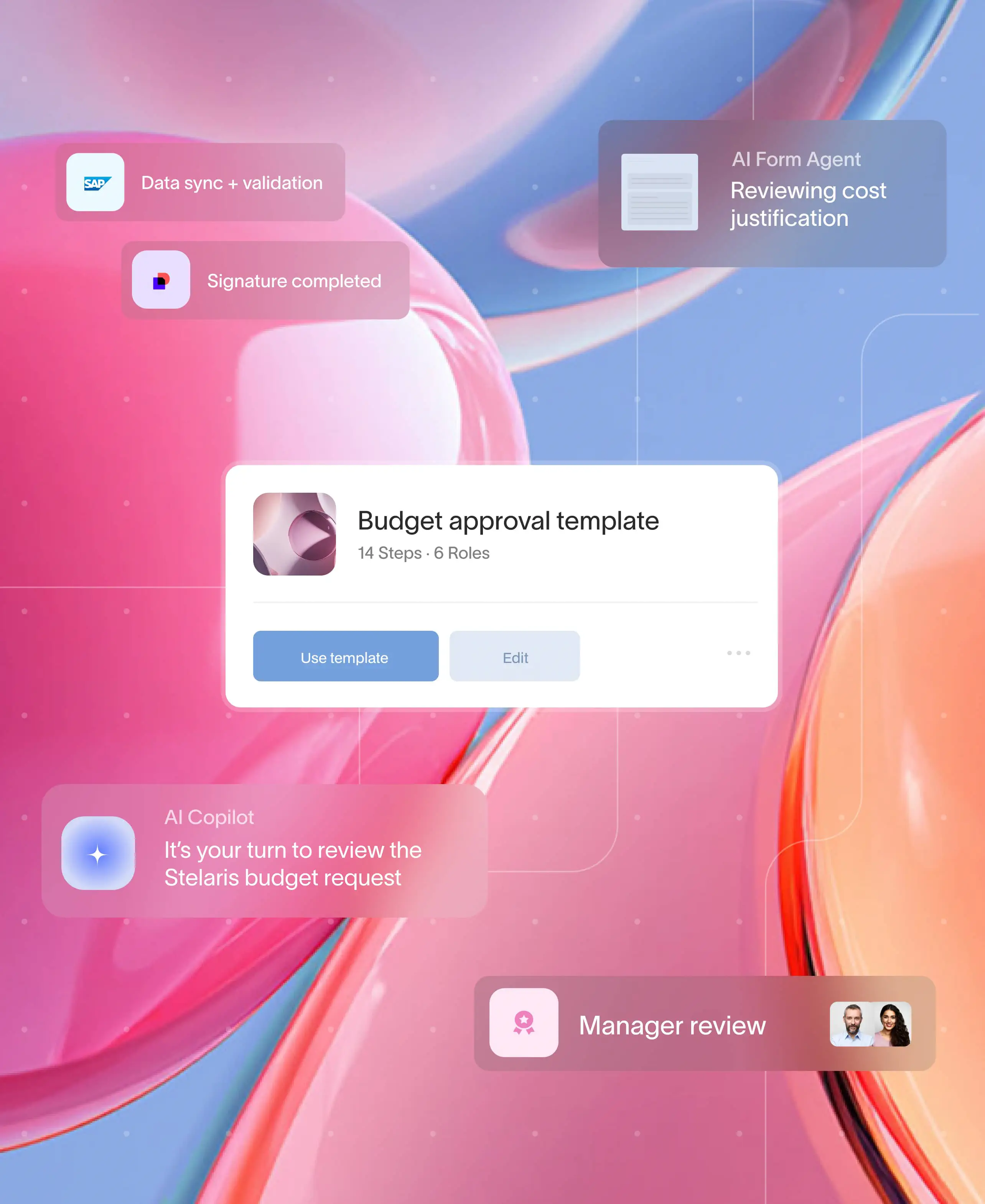
In today's digital-first world, customer expectations are rapidly evolving and so are the ways to fulfill them. For the finance sector, customer onboarding is traditionally a lengthy and complex process. It often requires multiple visits, documentation, and a variety of steps to complete this process.
However, with the fast-evolving technological advancements, the customer onboarding process has been completely redefined. Traditional ways are now replaced by streamlined, simplified, and modernized methods, offering a faster and more convenient experience. Moreover, it is now possible to extend personalized services to each customer, improving overall efficiency.
By offering smooth and swift financial services, these innovations are reshaping customer onboarding in banking. Here are the key trends, benefits, and challenges of onboarding, and its future aspects.
The traditional onboarding process in banking
Customer onboarding in banking typically involves various manual and time-consuming tasks. Customers must personally visit the bank, fill out forms, provide physical verification documents, etc. to complete the process. This lengthy process is not only frustrating for the customers but also costly and prone to human errors and delays.
Additionally, customers may need to visit separate departments in banks to provide multiple copies of the documents. This further causes delays and friction between the bank and its customers. As a result, it leads to increased drop-off rates during the onboarding process.
How technology is revolutionizing customer onboarding in banking
The innovative and digital-first solutions in the finance industry are revolutionizing how banks approach the customer onboarding process. The integration of innovative digital technologies in customer onboarding in banking has made the process faster, smoother, and more secure. Here are the key ways technology is redefining the customer onboarding process for banks:
1. Digital identity verification
One of the most appealing and significant innovations in fintech that improves customer onboarding is digital identity verification. Traditionally, customers needed to personally visit banks to submit identification documents. On the contrary, digital platforms allow for remote identity verification by leveraging biometrics like fingerprint scanning, facial recognition, etc.
This automated process reduces the risks of mistakes and errors while accelerating the verification time. Moreover, customers can securely complete the identity verification method at their convenience, improving satisfaction and accessibility.
2. Seamless online application and data collection
Gone are the days of manually filling and submitting the paperwork, and then waiting for approvals. Today, fintech innovations enable seamless online applications and document collection. Customers can quickly complete all necessary forms, upload documents, and digitally submit their applications.
Apart from that, e-signatures have also become a standard practice, allowing customers to electronically sign documents. These advancements not only simplify the process for customers but also reduce operational costs. The digital handling and collecting of documents empowers banks to handle a higher volume of customers in less time. This improves productivity for banks and increases customer satisfaction with reduced churn rates.
3. Artificial intelligence and machine learning
Artificial intelligence and machine learning are transforming customer onboarding by streamlining the overall process. They are also used to identify risks and personalize the customer experience to guide them through the onboarding process. With real-time assistance, they address the challenges to provide tailored solutions for seamless onboarding in banking.
They are also helpful in assessing the risk profile of new customers. These systems identify patterns and predict behaviors, enabling banks to make informed decisions. This not only speeds up the onboarding process but also enhances the delivery of personalized services to customers.
4. Faster approval and account setup
The traditional onboarding process often involves waiting for days or weeks for account approvals and service activation. With the rise of advanced digital solutions in fintech, customers can easily and quickly complete their onboarding and activate their accounts. After the identity verification is done, systems automatically process customer data to complete the process within a matter of minutes.
For example, using fintech advancements, customers can instantly open savings accounts and get approvals without waiting. This speed and convenience significantly enhance customer satisfaction, retention, and loyalty.
5. Improved compliance and risk management
Customer onboarding also involves regulatory compliance and KYC requirements. For banks, adhering to these regulations is a critical need; however, it can be cumbersome and time-consuming. Advanced technologies automate the KYC checks and ensure compliance without burdening the customers or employees.
Additionally, automated systems can quickly verify documents, cross-check information, and run anti-money laundering screenings. By digitalizing the compliance process, the banks not only speed up onboarding but also reduce human errors that may occur. This ensures a higher level of accuracy and compliance with industry regulations.
How Moxo leverages fintech advancements to ensure smooth customer onboarding in banking
Moxo has emerged as a transformative platform in redefining customer onboarding processes for banks. In an industry that demands speed, accuracy, and security, Moxo helps to streamline onboarding journeys, making them faster, more efficient, and secure. By leveraging cutting-edge technologies, Moxo supports a seamless and digital-first onboarding process to enhance customer experience while optimizing operational efficiency.
Moxo has addressed the issues of the traditional onboarding process by providing a comprehensive digital solution. It automates processes, eliminating the need for personal bank visits and ensuring a hassle-free onboarding experience. This shift not only provides convenience, but also ensures higher customer retention rates, driving growth and success.
Additionally, Moxo offers end-to-end digital-first solutions to customers. It integrates advanced technologies to make customer onboarding in banking secure, fast, and user-friendly. This seamless digital experience increases customer satisfaction and engagement, contributing to higher conversion rates and reduced churn rates.
Beyond improving efficiency and compliance, Moxo also ensures a personalized customer experience. By using data analytics, it customizes the onboarding process based on the customer's profile and needs. This personalization boosts engagement as it makes customers feel valued and also contributes to a positive customer experience.
Furthermore, Moxo enhances security throughout the onboarding process. The rise of cyber threats demands protection of customer data. With advanced security features like encryption, two-level authentication and controlled access, Moxo reduces the risk of data fraud, fostering customer trust.
Moxo also can easily integrate with existing systems. This ease of integration enables banks to scale rapidly without disrupting their core operations. Moreover, it helps banks to enhance their value by maintaining continuity and consistency throughout their services.
Benefits of Moxo for banking customer onboarding
- Increased efficiency
- Cost savings
- Improved customer experience and satisfaction
- Personalization
- High security
Moxo's comprehensive onboarding solutions empower banks to stay competitive and efficient. The platform remains a vital partner with the financial services industry to redefine the customer onboarding experience and drive innovation in banking.
Schedule your demo call and get started with Moxo today.
Conclusion
As the fintech landscape continues to evolve, so will the customer onboarding experience. Banks will continue focusing on personalization and tailoring services that meet the specific needs of individual customers.
Moreover, the seamless integration of Moxo with existing systems enhances security and transparency in the bank customer onboarding process. These technological advancements will better streamline and automate routine tasks, ensuring customer satisfaction.
Innovations are playing an important role in transforming the customer onboarding process in fintech and banking. By offering faster, convenient, secure, and efficient innovations, automation improves the overall customer experience. Additionally, it provides banks with tools to reduce their operational costs and remain competitive in the digital world.
As the banking industry evolves, automated onboarding has become an essential component of the finance industry’s future.
FAQs
How do innovations redefine customer onboarding in banking?
By streamlining the routine processes and introducing automation in the onboarding process, innovations are redefining customer onboarding in banking. They also eliminate the need for human interventions and eradicate errors and mistakes as they accelerate the overall process. They provide a seamless, secure, and convenient experience, improving efficiency and customer satisfaction.
What are the benefits of automated customer onboarding in banking?
The benefits include faster onboarding, improved customer experience, better data security, and reduced operational costs. Customers can instantly complete the onboarding process without any hassles, improving customer retention and lasting success for banks.
Is automated customer onboarding secure?
Yes, automated customer onboarding is highly secure. With its advanced technologies, it protects sensitive customer information and privacy. These security measures ensure that customer data is protected from potential fraud, errors, and mistakes, fostering trust in the onboarding process.





